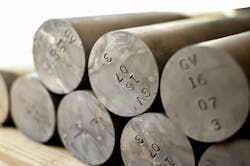Boeing Co.—more specifically, its Boeing HorizonX Ventures investment arm—has made its first investment in advanced materials technology in the form of materials innovator Gamma Alloys. Based in Valencia, Calif., Gamma Alloys specializes in aluminum-alloy-based composite materials, including metal-matrix composites for use in aerospace and automotive applications. Quite simply, the company is skilled at making aircraft- and aerospace-grade metals lighter and stronger. One of the goals in the Boeing investment is to encourage the development of aluminum alloys that are lighter and stronger than current materials, thus enabling the construction of lighter, stronger aircraft that require less operating energy and costs.
Gamma Alloys is pursuing advances in nano-reinforced aluminum alloys. In these materials, the aluminum is reinforced with nanoparticles (see photo) to form alloys with increased stiffness, improved wear resistance, and increased strength compared to conventional aluminum and magnesium alloys over wide operating temperature ranges. The company has developed a proprietary process by which aluminum oxide (ceramic) particles are added to various aluminum alloys to form stronger metal-matrix-composite (MMC) materials.
“The wear, strength, durability, and machining characteristics of Gamma’s materials have the opportunity to further reduce the weight of our products,” said Steve Nordlund, vice president of Boeing Horizon X. “The traction that Gamma Alloys has gained in automotive, energy and aerospace reinforces our confidence that Gamma has a unique set of materials.”
In addition to developing MMC materials, Gamma Alloys provides machining services and the capabilities to precision machine custom parts to exacting specifications. While the MMC materials offer advanced performance capabilities, the materials can also be machined in conventional ways, using extrusion, forging, and rolling methods.


